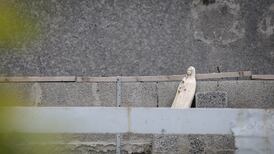Prices fell 4.7 per cent in the year to May, the steepest rate since 1933, according to new data from the Central Statistics Office (CSO).
The Consumer Price Index (CPI) fell 4.7 per cent on an annual basis and by 0.5 per cent in the month. This compares to an increase of 0.8 per cent recorded in May 2008.
The HICP, the EU-wide measure of inflation that excludes mortgage interest, is down 1.7 per cent annually, giving Ireland the lowest inflation rate in the EU.
HICP inflation turned negative in Ireland last month for the first time since the index began in 1996.
Inflation turned negative in January and the rate of decline has accelerated each month since.
The main reasons for the decline were falls in the cost of mortgage interest repayments and rent due to successive interest rate cuts by the European Central Bank, which in May cut rates by 0.25 per cent to a record low of 1 per cent.
Food costs have fallen 2.5 per cent over the last year although some products such as bread (+3.7 per cent) and coffee (+1.2 per cent) have increased.
Milk prices have fallen 2.2 per cent while pork products cost 3 per cent less than one year ago.
Alcohol and tobacco prices are up 7.9 per cent over the year and rose 0.4 per cent last month. Tax on cigarettes increased by 25 cent for a packet of 20 in the April budget.
Although clothing and footwear prices increased by 0.8 per cent last month they remain down 10.8 per cent on the year and this compares to a decline of 3.7 per cent in the year to May 2008.
Brian Devine, economist with NCB Stockbrokers, said the reduction in mortgage interest rate costs was the main reason for the fall in the Irish CPI.
He said if Ireland¿s core CPI falls relative to other Euro area countries this should respite competitiveness and boost economic activity.
¿However, if the adjustment in competitiveness and wages takes along time or is piecemeal then Ireland will be stuck in a deflationary environment for much longer despite this self-correcting mechanism.¿
Dr Ronnie O¿Toole, chief economist with National Irish Bank, said the falling interest rates was evidence of more intensive price discounting by Irish retailers than the rest of Europe over the last 12 months.
He said having become the most expensive country after the property boom ¿these figures indicate that Ireland has already regained a significant portion of lost competiveness¿.
Fine Gael finance spokesman Richard Bruton said services in Government-regulated sectors were still rising.
He said prices for ¿energy, post, telecoms, health insurance, financial services still climbed by 12.8 per cent in the last year, and by 5.8 per cent for Government provided services; refuse, healthcare, education, rail and bus transport; even as prices for goods in the shops and private services continued to fall.¿
Mr Bruton said if the Government had applied a price freeze to all State administered and regulated services as he party suggested ¿then the fall in prices overall would have been 6 per cent¿.
In May 1933 prices fell at 6.9 per cent.








